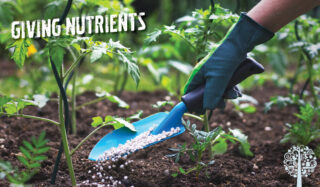Spring Garden Essentials | Garden Culture Magazine
Spring has arrived! The ground is warming up, and the days are longer. A list of essentials can help get things off to an excellent start for the growing season.
Giving Nutrients

It’s time to add nutrients to the garden beds after a long winter of rain, frost, and snow. If the old leaf mulch you used to protect the soil throughout the winter hasn’t completely decomposed, rake it aside and add it to the compost bin.
Add a fresh layer of compost but don’t dig it into the soil; this disturbs the integrity of the underlying layers of the earth. As you water and plant throughout the season, the compost will naturally work into the soil and roots.
Divide and Conquer
Now’s the time to divide (or thin) summer and fall perennials.
As soon as daylilies and hosta break ground, they can be divided. First, I dig out the whole plant and gently tear apart the roots. I then replant the clumps. Depending on the division, the first returns to the initial spot, and the second or third finds a new home in the garden. Finally, add some compost or bone meal into the hole with the newly planted divisions to help them establish.
Towards the end of the month, when the danger of frost passes, other summer perennials will show signs of growth. Once they do, separate them. Spring bloomers such as bleeding hearts, clustered bell flowers, or trillium that flower between now and early summer shouldn’t be disturbed. Wait until their cycle has finished; they return to dormancy in early summer.
Shrubs
While the ground is still moist from the winter and the days are cool, plant new shrubs, so the roots have time to burrow deep and establish before the summer heat arrives.
Time for a Summer Haircut

Summer shrubs that produce blooms on their new growth, such as buddleia and rose of Sharon, can be shaped and trimmed. Cut back perennial fuchsia to the first set of healthy buds. If you haven’t already, prune fruit trees such as peach, apple, and plum.
Helping Hand
Now’s the time to place tomato cages, trellis work, and other supports to hold up vines, perennials, and shrubs that will be large and in full bloom in a few months; this helps define their garden area and supports their weight.
Planting
Once the soil reaches 6°C toward the month’s end, plant lily bulbs and dahlias. You can also plant bare-root canna, crocosmia, and other summer stalwarts. Early kale crops and cool-loving vegetables such as broad beans or cabbage do well this time of year as long as they are protected if temperatures suddenly dip.
Let There Be Light

You can bring all those tender perennials sheltered in the garage, greenhouse, or basement back in the light. If they remain in their pots, give them a good watering, and once new shoots appear, consider re-potting them and giving them new soil. And although the days are warming up, there could still be cooler nights and light frost, so be ready to pull them back into a sheltered location temporarily.
Tidy Up
By the end of the month, in milder climates, early spring bloomers such as star magnolia, viburnum, spirea, camellia, witch hazel, forsythia, and winter jasmine have all had their moment. Most bloom off the last season’s new wood so now is the time to give them a prune and shape them.
In the southern hemisphere, fall is approaching, and gardeners are busy harvesting the last summer crops and adding compost to the soil as they prepare for cooler days.
No matter where you live, March is a busy time. Join me next month as we garden together!




